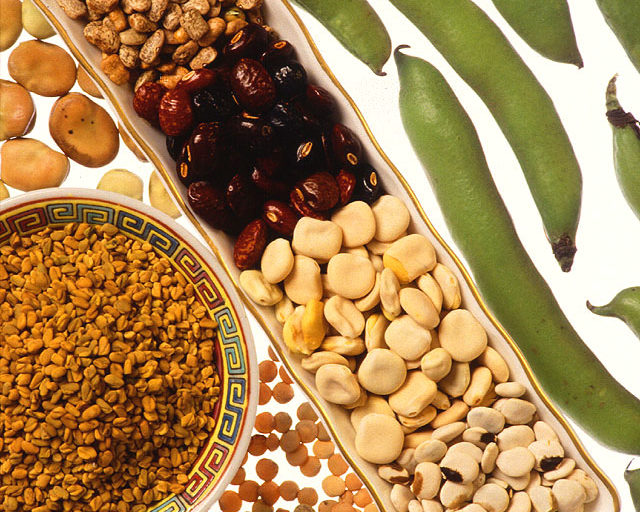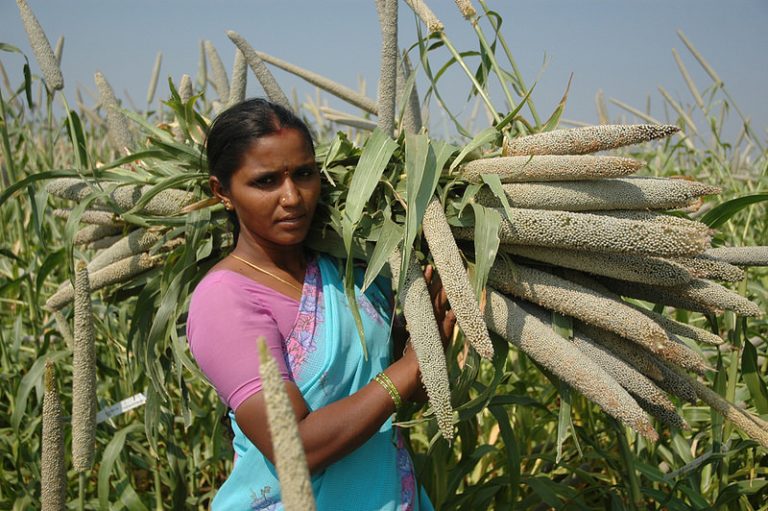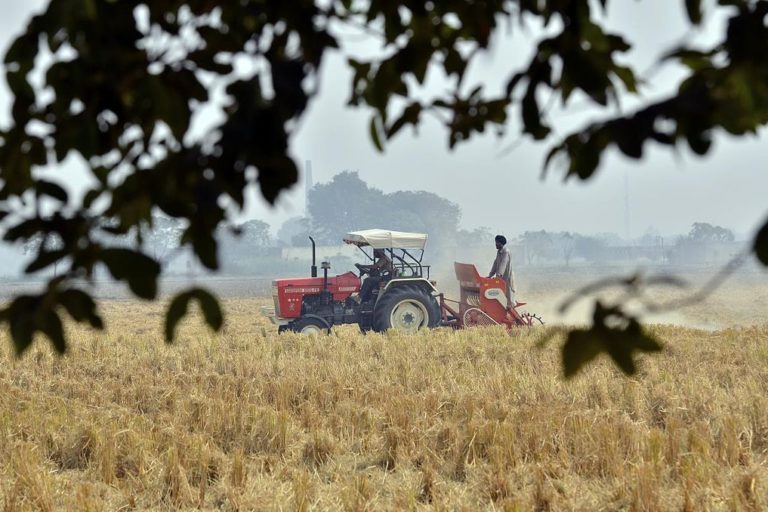- A recent first of its kind study provides the first scientific targets for a healthy diet from a sustainable food production system that operates within planetary boundaries for food.
- Compared with current diets, global adoption of the new recommendations by 2050 will require global consumption of foods such as red meat and sugar to decrease by more than 50 percent, while consumption of nuts, fruits, vegetables, and legumes must increase more than two-fold.
- In India, lack of dietary diversity, such as those in grains, behavioural shifts and energy contribution from fossil fuels need to be dealt with for nutrition and environment protection.
- At the same time, factoring in the right kind of animal farming practices such as those practised by traditional pastoralists and small scale farmers, is crucial.
For India to balance nutritional security and environmental protection, improving the quality of vegetarian diets to incorporate greater diversity remains a challenge, a section of experts have said in the wake of the launch of a report on a proposed planetary health diet.
The findings from the EAT-Lancet Commission on Food, Planet, Health calls for sweeping food system changes by providing the first scientific targets for a healthy diet from a sustainable food production system that operates within planetary boundaries for food.
Compared with current diets, global adoption of the new recommendations by 2050 will require global consumption of foods such as red meat and sugar to decrease by more than 50 percent, while consumption of nuts, fruits, vegetables and legumes must increase more than two-fold.
Describing the planetary health diet as one that sustains human beings in terms of health and wellness but also supports the environmental goal of protecting the planet, professor K. Srinath Reddy from the Public Health Foundation of India, one of the authors of the report, expressed concern over the lack of dietary diversity in India.
“Improving the quality of vegetarian diet to have greater diversity to include greater protein content, greater fruit and vegetable content, that is the challenge for India and not so much the meat part of it,” Reddy told Mongabay-India.
The Commission states that global targets will need to be applied locally – for example, countries in North America eat almost 6.5 times the recommended amount of red meat, while countries in South Asia eat only half the recommended amount.
All countries are eating more starchy vegetables (potatoes and cassava) than recommended with intakes ranging from between 1.5 times above the recommendation in South Asia and by 7.5 times in sub-Saharan Africa.
“Meat is not a major challenge for us but on the other hand the lack of dietary diversity with adequate amount of fruit and vegetables, the lack of grain diversity, not having enough grains, cereals and pulses is a challenge,” he said.
Grain diversity becomes important given the fact rises in temperature will hit staples as well as non-staples in terms of nutritional quality and production in India, said Reddy. Non-staples that are important for dietary diversity and health will also suffer substantially.
Then again, fruits and vegetables which are important for health are going to be substantially affected so our vulnerability in terms of nutritional security is going to be affected by global climate change and therefore as Indians we have to be concerned, argued Reddy.
For instance, scientists who unravelled the wheat genome have pointed out that in India, the challenge is to improve the wheat crop yield by 60-70 percent in the next 32 years (by 2050) when India’s population stabilises at 1.66 billion.
The other aspect is developing wheat varieties which, during their growth period, can tolerate higher and more erratic temperatures due to climate change, are resistant to emerging diseases and insects, require less water and other inputs including major and micronutrients and are nutritionally richer.
Researcher Joyashree Roy, Bangabandhu Chair Professor, Asian Institute of Technology, Thailand, observed the “timely” report provides a new lens to see the food system as provider of health and nutrition service to human population which is sustainable when human population peaks on earth by mid century.
“India’s absolute population which is going to be on rising curve to peak by 2050 can implement all the targets mentioned in the report through various additional measures and incentives within current institutional mechanisms of agriculture and horticulture extension services, some minor shifts in minimum support price across crops regionally and procurement policies,” Roy, who was not associated with the study, told Mongabay-India.
However, Roy said, national actions will not be enough as agriculture and horticulture are within-state subjects in India.
“Dissemination of the scientific information of this report at state level will help state governments to revisit various market based incentives to be compatible with desired transition which is beneficial for the countries’ economy as well,” said Roy, batting for greater diversity in vegetarian diets.
Roy notes given that malnutrition is a chronic problem for India at various levels of income class, diversity in diet with health parameters prioritised is a way forward for sustainable development in Indian context.
Need to revive nutritious foods
Food security researcher R.V. Bhavani at M. S. Swaminathan Research Foundation(MSSRF) observed that national nutrition surveys show that the the diets of people in India are largely cereal dominated.
“Consumption of animal foods are low often due to lack of affordability,” maintains Bhavani, Director, Agriculture Nutrition Health Programme and Programme Manager, Leveraging Agriculture for Nutrition in South Asia (LANSA), MSSRF.
Our baseline under a Farming System for Nutrition (FSN) study as part of the research programme on Leveraging Agriculture for Nutrition in South Asia also showed that the diets were largely vegetarian and cereal dominated and the population was undernourished, Bhavani elaborated.
“Consumption of all other food groups was less than the levels recommended by the Indian Council of Medical Research,” Bhavani pointed out.
Social activist Kavitha Kuruganti, associated with Alliance for Sustainable and Holistic Agriculture (ASHA) highlighted that what the Commission notes is best captured in the context of the need to revive nutritious foods like millets, as an illustration.
This addresses malnutrition of both kinds: undernutrition as well as obesity, diabetes and other non-communicable “lifestyle” diseases for yet another segment of our population.
“Millets are grown as cropping systems, and also a strategy for less-risky adaptation in the context of climate change. We do have some good examples from the ground, of state governments supporting the revival of diverse millets through special programmes. This is happening in Andhra Pradesh and Odisha,” Kuruganti told Mongabay-India.
Here, she pointed out, the programmes deal with consumer demand generation also, since production changes alone cannot be sustained if consumers don’t make major shifts, in their own enlightened self interest, on how they consume food.
More awareness, shift in behaviour for better diet
Reddy stressed on a behavioural nudge to transform food systems. “The way to do is to subsidise healthy foods and unhealthy foods are made costlier because that’s the way to give a behavioural nudge.”
India is working to bring in millets in the targeted public distribution system (PDS) having notified millets as ‘nutri-cereals’ for production, consumption and trade in 2018.
“But the problem is because of greater awareness it is the richer people (who are educated) who are opting for grains but the poorer people are still opting for double polished rice and other stuff which is again in the PDS. Fruits, vegetables and pulses are not there in the PDS,” Reddy observed.
But if there is not enough emphasis on production practices, just including in PDS is not a solution. “Look at rice and wheat in PDS…it only caused problems. It is not just the grain or commodity, it is equally as much about the production system,” Kuruganti observed.
Connecting the dots, the experts also underscored the importance of sustainable practices in animal farming to achieve a diet that benefits health and environment.
For non-vegetarians, Reddy advised fish over fowl and fowl over flesh on health and environmental grounds.
Kuruganti emphasised the Commission’s stress on the role for animal farming too, but of the right kind. “This is what traditional pastoralist communities did. What smallholder farmers, especially (dalit) women farmers do, to this day. Of rearing small animals (ruminants or poultry) and not depend on ‘stall-feeding’ or large scales of economy,” said Kuruganti.
This is important for farm livelihoods in India, apart from the right kind of nutrition for a segment of our population, Kuruganti explained.
Roy added that sustainable animal farming needs a very scientific approach and discussions to not only optimise healthy diet but also land use pattern and waste management.
International Institute for Applied Systems Analysis researcher Narasimha D. Rao whose work examines the relationship between energy systems, human development and climate change, agrees with all the principles and qualitative recommendations but says he is not comfortable with very specific recommendations and conclusions at a global scale.
“Specifically, I wouldn’t put a number to the amount of meat anyone should eat – that red meat (ruminant meat) has to significantly reduce is clear. Some societies are more dependent on them than others,” Rao, who was not associated with the study, told Mongabay-India.
In terms of emissions from food production, the Commission’s study focuses on methane and nitrous oxide and does not include carbon dioxide, because food production is a prime source of methane, and nitrous oxide, which have 56 times and 280 times the global warming potential (over 20 years) of carbon dioxide, respectively.
And because it is assumed there are no net inputs of carbon dioxide from fossil fuels to agriculture by 2050, said a press release on the report. The authors estimate the minimum, unavoidable emissions of greenhouse gases (GHG) for providing healthy food for 10 billion people by 2050.
“Climate smart” agriculture needed for India
The Commission goes on to suggest that decarbonisation of the world energy system must progress faster than anticipated, to accommodate the need to healthily feed humans without further damaging the planet.
India is the third largest GHG emitter in the world where agriculture is responsible for 18 percent of total national emissions. In its Nationally Determined Contributions, India has identified agriculture as one of the priority sectors for GHG emission reduction.
“While it is true that energy is a much smaller contributor to GHG than are nitrous oxide and methane, by no means do I believe that future scenarios of the food sector under business as usual will not have any net energy contribution from fossils by 2050,” emphasised Rao.
“In some countries that are increasing mechanisation of their agricultural sectors, e.g. India, energy makes an unusually high contribution from agriculture (though it is still small compared to other contributors),” he elaborated.
Reddy, the Commission report author, advocated climate smart agriculture in India in keeping with challenges of altering agricultural practices.
“So how do we meet our own dietary resources while we have to ensure that we have adequate land available for that and there in comes the question of how do we alter the agricultural practices ourselves to not only reduce our own contribution to global climate change but also to practice climate smart agriculture in our own country,” Reddy questioned.
Clearly, agriculture has to talk nutrition, feels Bhavani.
“Policy support is required for promotion of nutrient dense crops and development of their value chain. Millets and pulses are also more climate resilient. Nutrition awareness on what we eat and how it impacts not only on our own health but also the environment is required,” Bhavani added.
Article Credit: India.mongabay




